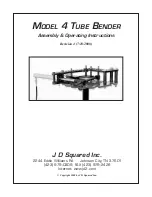
User's Guide HDSP System Digiface
© RME
19
The Hammerfall DSP's ADAT optical input and the SPDIF input operate simultaneously. Be-
cause there is no input selector however, the HDSP has to be told which of the signals is the
sync reference (a digital device can only be clocked from a
single
source). This is why the sys-
tem has been equipped with automatic clock source selection, which adopts the first available
input with a valid digital signal as the clock reference input. The input currently used as sync
reference is shown in the
AutoSync Ref
status field, together with its sample frequency.
Via
Pref. Sync Ref
(preferred synchronization reference) a preferred input can be defined. As
long as the card sees a valid signal there, this input will be designated as the sync source, oth-
erwise the other inputs will be scanned in turn. If none of the inputs are receiving a valid signal,
the card automatically switches clock mode to ‘Master’.
To cope with some situations which
may arise in studio practice, setting
‘Pref Sync Ref’ is essential. One
example: An ADAT recorder is con-
nected to the ADAT1 input (ADAT1
immediately becomes the sync
source) and a CD player is con-
nected to the SPDIF input. Try re-
cording a few samples from the CD
and you will be disappointed. Few
CD players can be synchronized.
The samples will inevitably be cor-
rupted, because the signal from the
CD player is read with the (wrong)
clock from the ADAT i.e. out of
sync. In this case, 'Pref Sync Ref'
should be temporarily set to SPDIF.
If several digital devices are to be
used simultaneously in a system,
they not only have to operate with
the same sample frequency but also
be synchronous with each other.
This is why digital systems always
need a single device defined as
‘master’, which sends the same
clock signal to all the other (‘slave’)
devices.
RME’s exclusive
SyncCheck
technology (first implemented in the Hammerfall) enables an
easy to use check and display of the current clock status. The ‘SyncCheck’ field indicates
whether no signal (‘No Lock’), a valid signal (‘Lock’) or a valid
and
synchronous signal (‘Sync’)
is present at each of the digital clock source inputs. The ‘AutoSync Ref’ display shows the cur-
rent sync source and the measured frequency.
In practice, SyncCheck provides the user with an easy way of checking whether all digital de-
vices connected to the system are properly configured. With SyncCheck, finally anyone can
master this common source of error, previously one of the most complex issues in the digital
studio world.
Содержание Hammerfall Digiface
Страница 5: ...User s Guide HDSP System Digiface RME 5 User s Guide Digiface General...
Страница 13: ...User s Guide HDSP System Digiface RME 13 User s Guide Digiface Driver Installation and Operation Windows...
Страница 32: ...32 User s Guide HDSP System Digiface RME User s Guide Digiface Driver Installation and Operation Mac OS X...
Страница 42: ...42 User s Guide HDSP System Digiface RME...
Страница 43: ...User s Guide HDSP System Digiface RME 43 User s Guide Digiface Disconnect Mode Connections and TotalMix...
Страница 50: ...50 User s Guide HDSP System Digiface RME...
Страница 70: ...70 User s Guide HDSP System Digiface RME User s Guide Digiface Technical Reference...
Страница 78: ...78 User s Guide HDSP System Digiface RME 35 Block Diagram Digiface...
















































